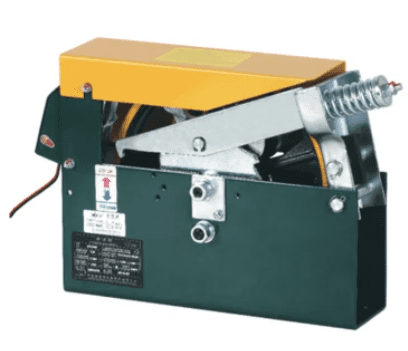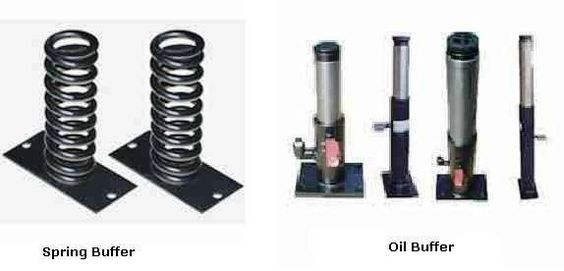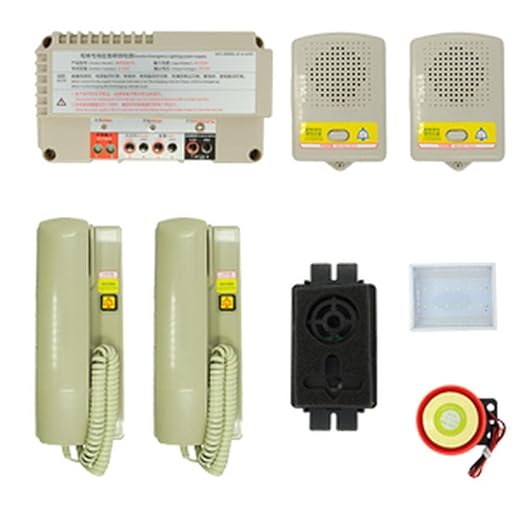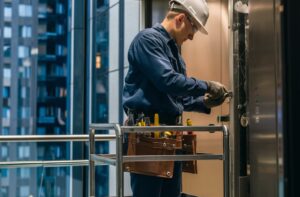Ensuring the safety of passengers and equipment requires the use of elevator safety components. These include rescue systems, overload protection devices, and emergency stop devices. The purpose of these components is to monitor for potential faults and respond appropriately to ensure safe operation. Your existing elevator supplier should offer a range of safety components, including heavy-duty protection devices, emergency braking devices, and safety gear, to enhance the security of both passengers and equipment.
Elevators have become an integral part of modern life, efficiently transporting people and goods in buildings of all sizes. While elevators provide significant convenience, they also come with the crucial responsibility of passenger safety. In this blog post, we will explore the key elements of elevator safety and the regulations that oversee their use.
Key Components of Elevator Safety
Speed Governor

The overspeed governor is a speed-sensing device that monitors the elevator’s speed and controls the safety brakes. If the elevator exceeds a safe speed, the governor triggers the safety brakes to engage, preventing a potentially dangerous situation. This crucial component ensures that the elevator operates within safe speed limits, thereby reducing the risk of accidents caused by overspeeding.
Safety Gear
Progressive safety gear is another vital component in elevator safety systems. These gears engage safety brakes in case of a malfunction or excessive speed. The brakes prevent the elevator from free-falling in the event of a mechanical failure, providing a critical layer of protection. This system is essential in maintaining the structural integrity of the elevator and ensuring passenger safety during unexpected mechanical issues.
Unexpected Car Movement Protection (UCMP) Device
In the event of an unexpected movement of the elevator, the UCMP device provides automatic protection. This device detects any unplanned movements and activates the necessary safety protocols to prevent accidents. This automatic response is crucial in maintaining a safe environment for passengers, particularly in situations where manual intervention might be too slow or impossible.
Car Door Anti-Sweeping Device
The car door anti-sweeping device ensures that the elevator doors do not open unexpectedly outside the designated opening area. This device is a critical safety feature that prevents passengers from being exposed to the elevator shaft or other dangerous situations. Ensuring that your elevator contractor or facility manager has implemented this device can significantly enhance passenger safety.
Hoistway Doors and Interlocks
Hoistway doors are an essential safety component that blocks access to the elevator shaft when the elevator car is not at the floor. Interlocks function to ensure the elevator remains stationary unless the hoistway doors are securely closed. Interlocks ensure that the elevator cannot move if the hoistway doors are not properly closed. These mechanisms prevent accidents and ensure that passengers cannot enter or exit the elevator when it’s not aligned with the floor. This dual system of doors and interlocks is fundamental in preventing falls and other accidents associated with elevator shafts.
Buffer Springs

Buffer springs are essential to the efficient and well-managed operation of elevators. As the elevator reaches its designated floor, these components are designed to collect and release energy, guaranteeing a safe and gradual halt. In the elevator pit, springs acting as counterweights and cabin buffers are mounted on concrete bases. In an emergency, these springs support the entire weight of the cabin or the counterweight. They are advised to use the elevator up to a speed of two meters per second, ensuring that the stopping mechanism is effective and reliable.
Emergency Stop Button
An emergency stop button is available for passengers or building staff to stop the elevator in an emergency. This critical feature helps prevent accidents and manage situations such as power outages or passengers being trapped. The ability to stop the elevator immediately can make a significant difference in emergency scenarios, providing a quick response option for those inside the elevator.
Overload Sensors
Overload sensors are designed to detect if the elevator is carrying more weight than it can safely handle. When an overload is detected, the elevator will prevent additional passengers from entering and notify maintenance personnel. This system prevents the elevator from operating under unsafe conditions, thereby protecting the structural integrity of the elevator and ensuring passenger safety.
Additional Safety Measures
Emergency Communication Systems
Modern elevators are equipped with emergency communication systems that allow passengers to contact building personnel or emergency services if they become trapped or experience another emergency. These systems typically include intercoms or alarm buttons that directly connect to a monitoring service, ensuring that help is quickly on the way.
Fire Safety Systems
Elevators must also be equipped with fire safety systems to prevent them from becoming hazards in the event of a fire. This includes features like fire-resistant doors, automatic recall to a designated floor, and integration with the building’s fire alarm system. These measures ensure that elevators do not operate during a fire, which could lead to further risks for passengers.
Regular Maintenance and Inspections
To maintain the highest levels of safety, regular maintenance and inspections are mandatory. Elevator components should be checked frequently by certified professionals to ensure that all safety features are functioning correctly. This includes testing emergency brakes, communication systems, and overload sensors, as well as inspecting the overall condition of the elevator.
Compliance with Safety Regulations
Elevator safety is governed by stringent regulations that vary by region. Compliance with these regulations is essential for the safe operation of elevators. Building owners and managers must ensure that their elevators meet all local, national, and international safety standards. These regulations cover everything from the design and installation of elevators to their ongoing maintenance and inspection schedules.
Conclusion
Elevator safety is a multi-faceted concern that requires attention to various components and systems. From the overspeed governor and safety gear to emergency stop buttons and overload sensors, each element plays a vital role in ensuring the safe operation of elevators. By understanding these critical components and adhering to regular maintenance schedules and safety regulations, building owners and managers can significantly enhance the safety and reliability of their elevator systems. Regular updates and compliance with the latest safety standards are essential to protecting passengers and maintaining the trustworthiness of these vital transportation systems.






Hi there,
I have reviewed your domain in MOZ and have observed that you may benefit from an increase in authority.
Our solution guarantees you a high-quality domain authority score within a period of three months. This will increase your organic visibility and strengthen your website authority, thus making it stronger against Google updates.
Check out our deals for more details.
https://www.monkeydigital.co/domain-authority-plan/
NEW: Ahrefs Domain Rating
https://www.monkeydigital.co/ahrefs-seo/
Thanks and regards
Mike Brickman
Pingback: Stuck inside an Elevator?
Pingback: Can Elevators Deadly? Discover the Shocking Truth!
Pingback: Comprehensive Guide to Understanding Traction Drive Elevators - Elevators Tale
Pingback: Elevator Insights: Unlocking the Mystery
Pingback: Will Elevator Free Fall? Uncovering the Truth Behind the Myth
Pingback: Elevator noise: Causes & Fixes